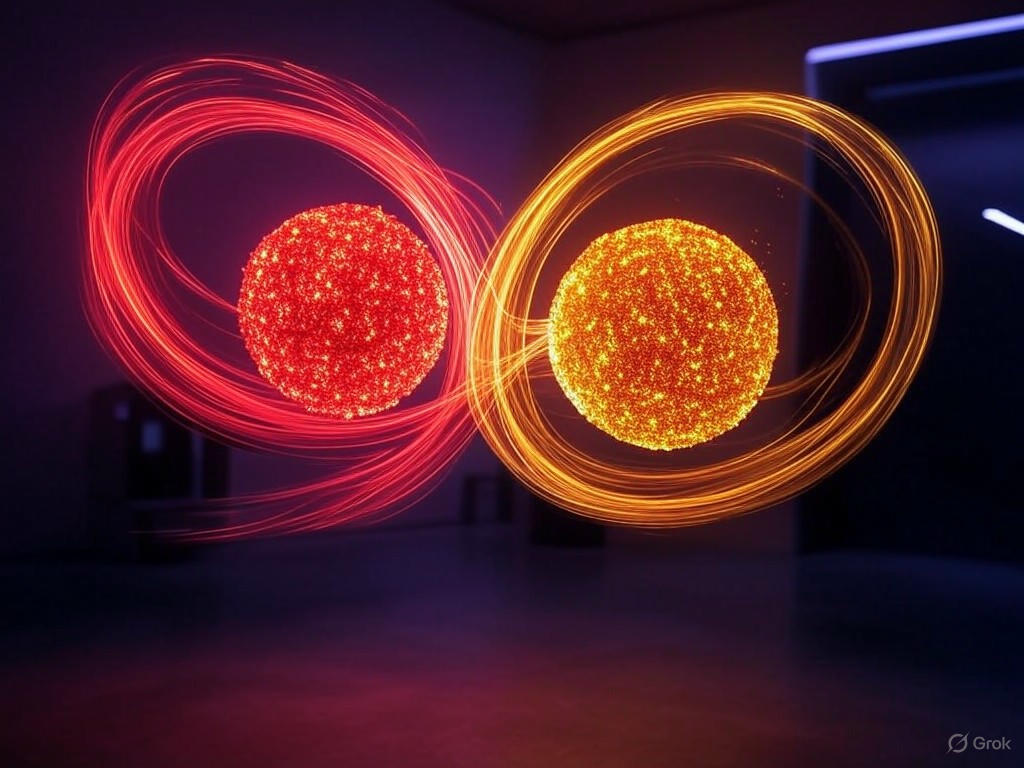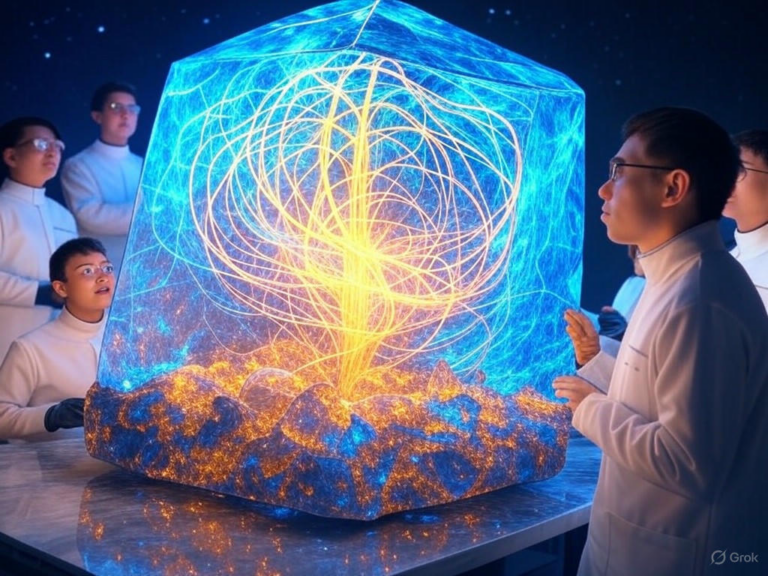
Quantum Entanglement Breakthrough: Scientists Crack 20-Year Purity Puzzle
Quantum Entanglement Breakthrough Reshapes Future of Quantum Technologies
Imagine a world where particles communicate instantly across vast distances, defying our everyday understanding of reality—that’s the essence of quantum entanglement. This phenomenon has long puzzled scientists, but a recent discovery finally cracks a 20-year mystery about its purity, as announced on May 2, 2025. By solving this, researchers are opening doors to faster quantum computing, unbreakable communication, and ultra-sensitive sensing tools.
Quantum entanglement links particles in a way that Einstein famously called “spooky action at a distance.” It’s not just theoretical; it’s the backbone of emerging technologies that could revolutionize how we process data or secure information. Have you ever wondered how quantum entanglement might one day power devices in your home? This breakthrough brings that possibility closer, paving the way for innovations that blend science fiction with real-world applications.
The 20-Year Puzzle in Quantum Entanglement Purity
For two decades, experts have wrestled with quantum entanglement purity, a key factor in making quantum systems reliable and effective. This puzzle centered on whether certain maximally entangled states could hold up in noisy, real-world environments. The answer, surprisingly, is no, which flips previous assumptions on their head and offers fresh insights for practical quantum tech.
Listed as Problem Number 5 by the Institute for Quantum Optics and Quantum Information in Vienna, this question explored the consistency of quantum entanglement across various systems. Now resolved, it highlights how quantum entanglement can be better managed, even when imperfections creep in. What does this mean for you? It could lead to more stable quantum devices that don’t falter under everyday conditions.
Breakthrough Quantum Filter for Preserving Entanglement
Alongside the theoretical win, USC researchers have unveiled the world’s first optical filter designed to isolate and protect quantum entanglement. Published in Science on March 28, 2025, this innovation uses anti-parity-time symmetry to keep entangled states intact. It’s a game-changer for building compact systems that could slot into everyday quantum circuits.
Led by professors Mercedeh Khajavikhan and Demetri Christodoulides, with graduate student Mahmoud A. Selim as the lead author, the filter addresses one of quantum entanglement’s biggest hurdles: maintaining coherence amid interference. This development, backed by the Air Force Research Office, underscores how quantum entanglement is becoming a practical tool for computing and communication. Could this filter be the key to making quantum tech more accessible in fields like healthcare or finance?
How This Quantum Entanglement Filter Operates
The filter works by harnessing anti-parity-time symmetry to selectively preserve specific entangled states, filtering out the noise that typically disrupts quantum entanglement. This method ensures that quantum information stays reliable as it travels through circuits, a vital step for real-world applications. It’s like having a guardian for quantum entanglement, protecting it from the chaos of the environment.
Supported by funding from the Air Force, this research highlights the strategic value of quantum entanglement in areas like defense and everyday tech. By integrating such filters, we might soon see quantum systems that are not only powerful but also durable. What if your smartphone could use quantum entanglement for instant, secure data transfer?
New Formulas to Measure Quantum Entanglement in Materials
Scientists at Osaka Metropolitan University have introduced simplified formulas to gauge quantum entanglement in electron systems, a move that enhances our ability to analyze it at the atomic level. Their work, published in Physical Review B on January 7, 2025, focuses on local quantum entanglement in nanoscale materials. This is a big leap for understanding how quantum entanglement behaves in complex structures.
Led by lecturer Yunori Nishikawa, the team examined entanglement between selected atoms and their surroundings in strongly correlated systems. Unlike broader studies on materials with magnetism or superconductivity, this approach dives deep into local interactions. It’s a reminder that quantum entanglement isn’t just a big-picture concept—it’s happening at the tiniest scales, potentially unlocking new materials for tech advancements.
“Previous research overlooked these local details,” Nishikawa noted, emphasizing a more granular view. This could inspire innovations in everything from batteries to electronics, making quantum entanglement a cornerstone of future designs. How might these formulas change the way we engineer everyday gadgets?
Quantum Entanglement Hits a Turning Point in Computing
The 2025 Tech Trends Report from the Future Today Institute signals that quantum entanglement is helping quantum computing reach a major milestone. With breakthroughs in error correction, we’re seeing hybrid systems that blend quantum and classical tech for real-world use. This progress is dismantling barriers that once made quantum entanglement seem too fragile for practical applications.
Companies like AWS and Microsoft are ramping up quantum chip development, shifting focus from AI to this frontier. The report points out that quantum entanglement could optimize tasks like energy grid management, potentially slashing inefficiencies by 20%. As quantum entanglement becomes more reliable, it’s not just about lab experiments—it’s about tangible benefits.
Emerging Uses of Quantum Entanglement in Daily Life
Practical applications of quantum entanglement are on the horizon, from speeding up drug discovery to refining financial models. Early adopters might use it for specific optimizations, like Siemens Quantum Energy’s projections for cost savings. This evolution shows how quantum entanglement can evolve from a scientific curiosity to a everyday resource.
Imagine quantum entanglement helping simulate molecular interactions for new medicines—what could that mean for global health? As tech matures, these tools will expand, offering advantages that classical systems can’t match.
Quantum Entanglement as a Usable Resource
Today, quantum entanglement is viewed as a measurable resource that can be manipulated, much like energy or data. A January 2025 article in Physics Today frames it this way, emphasizing how we can mix, distill, and optimize it for tech applications. This perspective turns quantum entanglement into something engineers can actively harness.
By treating quantum entanglement as a commodity, researchers are finding ways to preserve it in noisy settings. This shift is crucial for advancing quantum technologies beyond theory. What if quantum entanglement could power secure networks that protect your personal data from hackers?
Implications of Quantum Entanglement Advances
These developments in quantum entanglement are set to transform computing, communication, and sensing. For quantum computing, better purity means sturdier systems that handle complex calculations without breaking down. The USC filter, for instance, could safeguard data as it flows through circuits.
In quantum communication, enhanced entanglement leads to safer networks and efficient key distribution. For sensing, it promises devices with remarkable precision, from medical scans to detecting faint signals in space. How will quantum entanglement reshape industries you interact with daily?
Quantum Computing and Entanglement Purity
Quantum entanglement purity directly tackles noise in computing, allowing for more stable qubits. This could enable machines to solve problems that stump today’s supercomputers. With tools like the USC filter, quantum entanglement might make quantum computers a reality sooner than expected.
Quantum Communication Through Entanglement
Secure communication relies on quantum entanglement for unbreakable encryption. Advances in purity will improve quantum repeaters, building a robust quantum internet. This means faster, safer data exchange in an increasingly connected world.
Quantum Sensing with Entanglement
Quantum entanglement enhances sensors to detect minute changes, revolutionizing fields like healthcare. From better MRI scans to environmental monitoring, its potential is vast. These breakthroughs make quantum entanglement a key player in precision technology.
The Path Forward for Quantum Entanglement Technologies
While exciting, challenges remain in scaling quantum entanglement for widespread use. The 2025 Tech Trends Report urges businesses to build quantum literacy and test hybrid systems. Forward-thinking companies are already identifying uses and bolstering security.
Timing investments is tricky, but preparing now positions organizations for success. What steps could your business take to embrace quantum entanglement? By experimenting early, you’ll be ready when these technologies go mainstream.
Wrapping Up: The Dawn of Quantum Entanglement Era
From solving the entanglement purity puzzle to developing new filters and formulas, we’re witnessing a quantum leap in science. These strides mark a pivotal moment, as highlighted in recent reports and studies. As quantum entanglement becomes more tangible, it promises to drive innovation across sectors.
What’s next for you? Dive into these developments and see how they might spark ideas in your field. We invite you to share your thoughts in the comments, explore more on quantum tech in our related posts, or subscribe for updates—let’s shape this quantum future together.
References
[1] Scitechdaily. “Quantum Code Cracked: Scientists Solve 20-Year Puzzle Behind Entanglement Purity.” Link
[2] USC Viterbi School. “USC Researchers Develop First-Ever Quantum Filter.” Link
[3] Physics Today. “Quantum Entanglement: A Modern Perspective.” Link
[5] Osaka Metropolitan University. “New Formulas for Quantum Entanglement.” Link
[6] Future Today Institute. “2025 Tech Trends Report.” Link
[7] Physics World. “Open Problem in Quantum Entanglement Theory Solved.” Link
quantum entanglement, entanglement purity, quantum breakthrough, quantum computing, quantum communication, quantum sensing, quantum physics, quantum filter, quantum technologies, quantum puzzle







